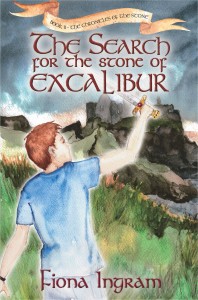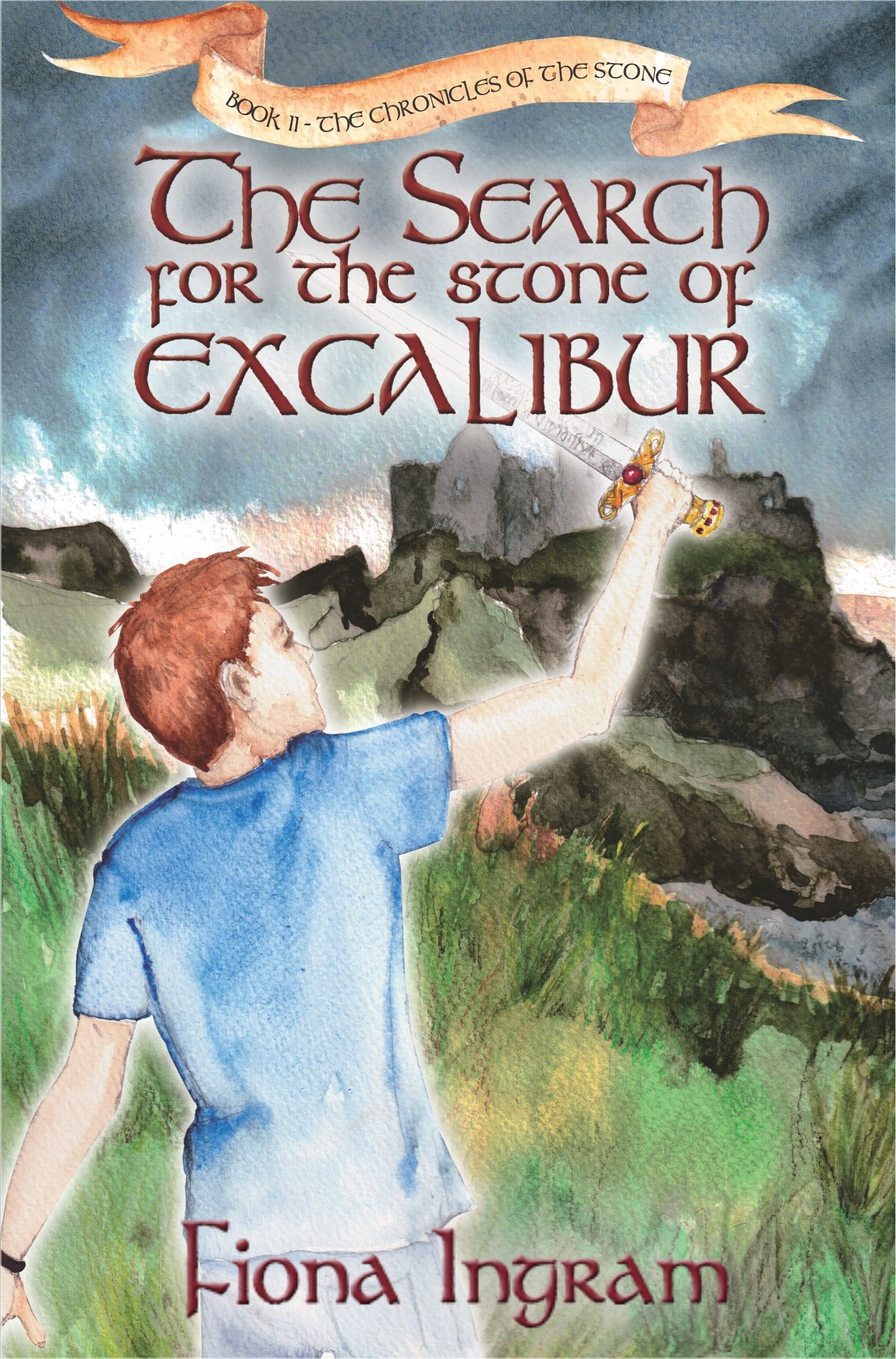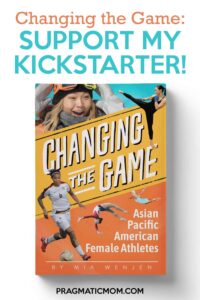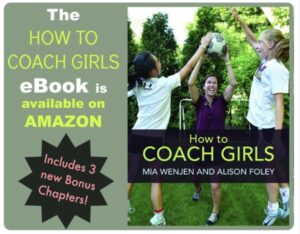Please welcome my guest author today, Fiona Ingram with tips for teachers on getting kids involved in creative writing.
—————
Creative writing for kids is one of the most challenging and fulfilling aspects of the classroom. Many teachers who are not writers may struggle to explain the nuts and bolts of writing in relation to the imaginative and creative process involved in making a story. Children may also not grasp the solid hard work involved in creating the structure and plot of a good story. Here are some easy classroom tips to make the creative writing process both successful and fun.
Many young writers feel challenged by what seems to be such a daunting task—writing a story. They wonder how they will ever remember the who, what, why, when and where of their proposed story. Nothing is easy without practice and as we all know, practice makes perfect. My suggestion for a young writer wanting to put their own story down is to start with stories they already enjoy.
Read some of your favorite books, the ones that had you longing for more excitement. Or the one that was so fascinating you read it more slowly so the book did not end too soon. Or the one where you were so tired but could not put it down until you knew the hero was safe … for now. Think about why the author had you captivated from the start. The author probably came up with a great idea right away, an idea that gripped you. It could have been a mystery, a quest, a journey, a mission, and perhaps something that seemed impossible for the hero to accomplish. The author then drew you into the story which had unexpected twists and turns, surprises, and sometimes disasters that affected the hero. The plot is what makes a hero or heroine who they are. Every plot has a story to tell, and that story follows a certain sequence. Sure, you can jump around and have side excursions, but every writer should bring his hero back to the main story soon enough.
Tips for Teachers: Getting Kids Involved in Creative Writing
Any good story is composed of two important elements: a really gripping plot and realistic, believable characters.
How To Choose a Great Story Topic
You may think, “But what can I write about?” Write about what you know best, or what excites you, or what you enjoy. You’ll find that when you are really keen on something—it can be an activity, a place, an event, or a person (real or imaginary)—it becomes easier to write. Do you love reading about faraway exciting places? Then research a place you find interesting and set your story there. Do you enjoy mysteries? Think about something that’ll keep people guessing. Are you good at a skill or a sport? Set your story around a character with those abilities.
Plot Comes First
What comes first? Everyone has his or her own ideas but I believe the plot should come first. What’s the point of great characters if they sit around and don’t achieve very much. So, step one, write your plot down in a few words (that’s all you need). “My story is about (name) who manages to (achieve task) and goes on to (resolve problem).”
How to Construct your Storyline
Structure is very important otherwise you’ll end up writing away like crazy but forget some vital detail here and there, and your story will fall to pieces. Sit down and draw your storyline—remember, you have already written it down in a few words. You may not stick to it exactly, but it’s important to map out where the story is going. You don’t want to give away the plot too soon, or tell the reader everything all at once. So begin with a simple 3-point system: the Beginning (your hero appears—what is he doing? What does he want to achieve?); the Middle (something will happen to him and he has to …?); the Ending (your hero resolves the situation). From those three vital points, you will fill in your other plot points—how did… why did… what happens next…
Make Your Characters as Interesting as Possible
Tip: take them from real life examples. You could write about someone like yourself, or else model the characters on friends at school, teachers, or other people you know. The dialogue between your characters is also important because that’s one place to develop the plot line. Their interaction will reveal the chain of events as the characters work out various situations. Don’t forget to break your dialogue with various activities so that readers don’t get bogged down in lots of talking but no action.
Make Your Information to the Reader as Interesting as Possible
You can do this by weaving it into the story. Don’t say that it’s cold. Get your character to shiver because he left his jacket at home. You can set the scene around your characters by using adjectives and adverbs to enhance your descriptions and actions but don’t overdo it. The reader is also going to use his or her imagination, so don’t overload your writing. At the same time, you can help the reader along by using your five senses to engage theirs: sight, sounds, touch, taste, smell. Is your hero in a hot, exotic climate? He (or she) will be sweating, the sounds will be different, the taste of the food unusual etc. Is your heroine (or hero) in a strange place – what is she experiencing e.g. confusion, anxiety, excitement or curiosity? You will create the environment for your readers so they appreciate exactly what the hero is experiencing.
The Hard Part
If you love what you’re writing about, and you trust your imagination, then writing will be as fun and exciting as you can imagine. However, two important elements must never be forgotten: research and grammar.
Research for Your Story
You willl find that research will be necessary whether your story is set in the real world, or if it’s an imaginary, fantasy, or sci-fi land. Make notes before and during your writing process. Your heroes are likely to be around your own ages, so think about how they are going to get places and achieve things. If they are travelling, are they alone (not likely) and will they need assistance (possibly)? If they are in a foreign country then make sure your facts are accurate. How did they get there, who are they with, and how are they going to accomplish their task/challenge? If it’s a fantasy setting, then make sure you don’t lose track of your characters and the various places and items found in your fantasy world. Make your own research notes about your fantasyland.
Grammar and Spelling
Spelling and grammar are very important otherwise your readers will never get through the first few pages. So make sure you use your spelling and grammar check on your computer (if you’re using one) and your dictionary and style guide (if you’re writing by hand). In any case, you’ll have to check everything yourself because sometimes computers will accept a word that is spelled right, but is actually the wrong word for the sentence or context.
A final piece of advice: writing should be fun and exciting. Just enjoy yourself and let your imagination take you to places you only ever dreamed of…
About Fiona Ingram
Fiona Ingram was born and educated in South Africa, and has worked as a full-time journalist and editor. Her interest in ancient history, mystery, and legends, and her enjoyment of travel resulted in The Secret of the Sacred Scarab, the first in her exciting children’s adventure series—The Chronicles of the Stone. This was inspired by a family trip the author took with her mom and two young nephews aged ten and twelve at the time. The book began as a short story for her nephews and grew from there. The Search for the Stone of Excalibur is a treat for young King Arthur fans. Fiona is busy with Book 3 entitled The Temple of the Crystal Timekeeper, set in Mexico.

While writing The Secret of the Sacred Scarab, Fiona fostered (and later adopted) a young African child from a disadvantaged background. Her daughter became the inspiration for the little heroine, Kim, in The Search for the Stone of Excalibur. Interestingly, the fictional character’s background and social problems are reflected in the book as Kim learns to deal with life. Fiona’s experiences in teaching her daughter to read and to enjoy books also inspired many of her articles on child literacy and getting kids to love reading.
About The Secret of the Sacred Scarab
Continuing the adventure that began in Egypt a few months prior in The Secret of the Sacred Scarab, cousins Adam and Justin Sinclair are hot on the trail of the second Stone of Power, one of seven ancient stones lost centuries ago. This stone might be embedded in the hilt of a newly discovered sword that archeologists believe belonged to King Arthur: Excalibur.
However, their long-standing enemy, Dr. Khalid, is following them as they travel to Scotland to investigate an old castle. Little do they know there is another deadly force, the Eaters of Poison, who have their own mission to complete. Time is running out as the confluence of the planets draws closer. Can Justin and Adam find the second Stone of Power and survive? And why did Aunt Isabel send a girl with them?
Join Justin and Adam as they search not only for the second Stone of Power, but also for the Scroll of the Ancients, a mysterious document that holds important clues to the Seven Stones of Power. As their adventure unfolds, they learn many things and face dangers that make even their perils in Egypt look tame. And how annoying for them that their tag-along companion, Kim, seems to have such good ideas when they are stumped.
The Search for the Stone of Excalibur Giveaway
Win a hard copy of Fiona Ingram’s book by entering the Rafflecopter below! Thanks!
Follow PragmaticMom’s board Reading & Writing Fun on Pinterest.
BEST #OWNVOICES CHILDREN’S BOOKS: My Favorite Diversity Books for Kids Ages 1-12 is a book that I created to highlight books written by authors who share the same marginalized identity as the characters in their books.











Good resource for teachers…hopefully writing curriculum will allow for implementing it in their classrooms.
Hi Barbara,
Hopefully teachers will be able to use it. I know all my kids have creative writing units this year in English Language Arts.
When I give book readings at schools I often find teachers are keen for me to talk on creative writing for kids. It’s a wonderful way for kids to discover books as well.
Hi Fiona,
When we book author visits at our elementary school, it usually costs extra (and an extra session) to have the author do a writing segment with the kids. We used to use Barbara O’Connor who was wonderful but she just stopped doing them this year so we used Jacqueline Davies this year to rave reviews. Kids do love learning how authors write and doing the exercise they set up for them. We also hire a poet to do 3 sessions with our 4th graders.
Teachers would love to have a resource like this. What a fun way to teach kids to begin to look at what is included in a story so that they “see” with knew eyes when they read their next book. And, a good way to encourage them to begin writing short stories. Great post.
Hi Patricia,
I really enjoy the guest posts from KidLit authors. They always bring something interesting to the table. I’m so glad to have Fiona Ingram today!
I love these ideas, too! I’m going to have to share this post on social media and Pinterest so I can reference it time and again. Mia, thank you again for hosting Fiona.
Thanks so much for sharing Renee!! So glad you found her post helpful!
Emma writes stories ALL the time. Having pretty notebooks definitely encourages her, but I think this is also a natural strength for her.
I love the cover art for this book!
Hi MaryAnne,
It’s great that Emma writes on her own! I wish my kids would do that more!
Thanks for hosting me, Pragmatic Mom. I’m really glad people have enjoyed this post. I find that talking to kids about books, reading and doing their own writing is very rewarding. I once did a book reading/talk at a literacy center in quite a poor area. It was Book 1, The Secret of the Sacred Scarab, set in Egypt. I did not know what to expect but the organiser is passionate about child literacy so I said yes. It was incredible. The kids came dressed as Egyptians (many Cleopatras! many Tutankhamuns!). I think the parents had sacrificed quite a few bed sheets. The kids had also made models of pyramids, drawn maps of Egypt and written poems. I was bowled over. The organiser made it into a real event with popcorn and cold drinks. We had a Best Dressed Ancient Egyptian Contest as well.
Thank you for the comment about the cover, Maryanne. I will pass that on to the artist/illustrator. She is busy with Book 3 and the images are stunning.
Hi Fiona,
Wow! That school visit sounds really special! I hope you were able to get a lot of photos! I think kids are naturally drawn into Ancient Egypt. I know I am and two of my kids are as well.
Great suggestions, Fiona, and not just for kids!
By the way, is the giveaway for the Sacred Scarab, or the Search for Excalibur? The header says one thing, the picture is of the other. You are advertising it as the latter, but when I clicked to tweet, it said the former. I don’t want to send it out there with the wrong thing!
It is for The Search for the Stone of Excalibur. However, if anyone is keen to read an e-pub of Book 1, let me know.
Hi Rebecca,
I fixed the error. It’s the Search for Excalibur.
Pragmatic Mom: about the book reading at the literacy center – what moved me was that it was a poor area, yet every single child came with something to contribute. Every child clearly had a parent’s help with a costume, ‘Egyptian’ make-up and a headdress (lots of aluminium foil and gold paint, and a few tasselled curtain cords!). That told me that every parent was involved somehow in supporting their child’s activities, even if it meant cutting up a bed sheet and spending a few hours on a costume to make sure their child felt included. I think that’s a good point as well to make: when kids feel their parents and teachers are involved and enthusiastic, it gets them involved and keen too.
Hi Fiona,
How moving that parents in a poor area were willing to put in time and sacrifice a bedsheet to participate in your author event. I totally agree with you! I think parents are the MOST IMPORTANT role model for getting kids reading. Not just kids seeing their parent reading, but having parents actively involved in making reading a priority and something that is fun. I highly recommend hosting a book club for kids as a parent. It’s turned out to be my kids’ favorite activity we ever did and it only seems to work in elemetary school for us; after that kids are so busy that it’s nearly impossible to find a time that works for everyone.
I don’t have kids, but my nephews aren’t old enough to be up to this yet. I imagine they will, since my sister was a great story writer as a kid.
Parents can easily lead by example and when kids see their parents enjoy reading and stories, they will follow!
Yes! Totally agree Fiona!!
Hi Larissa,
I hope your nephews enjoy writing and are inspired to write on their own. It’s tough for me to get my kids writing at home so I’m always looking for fun ideas to tempt them.